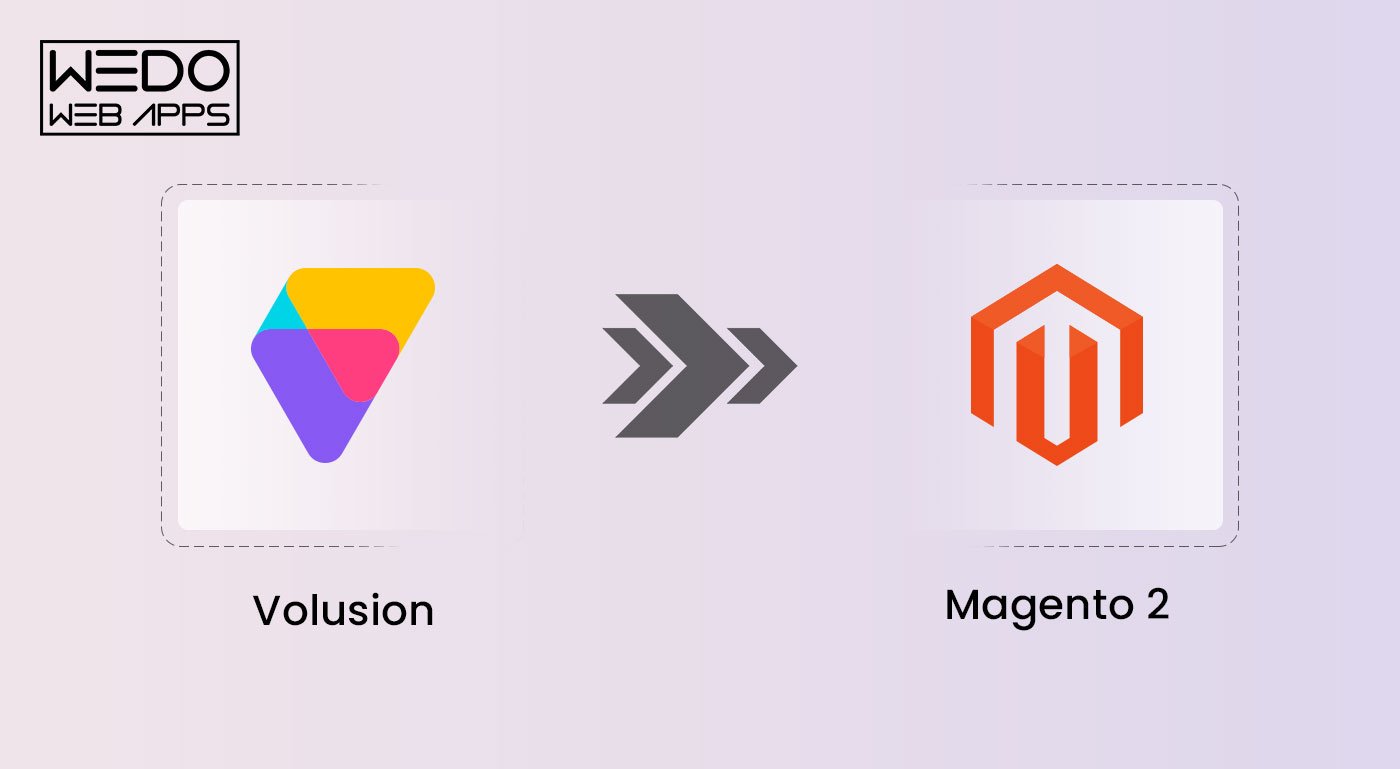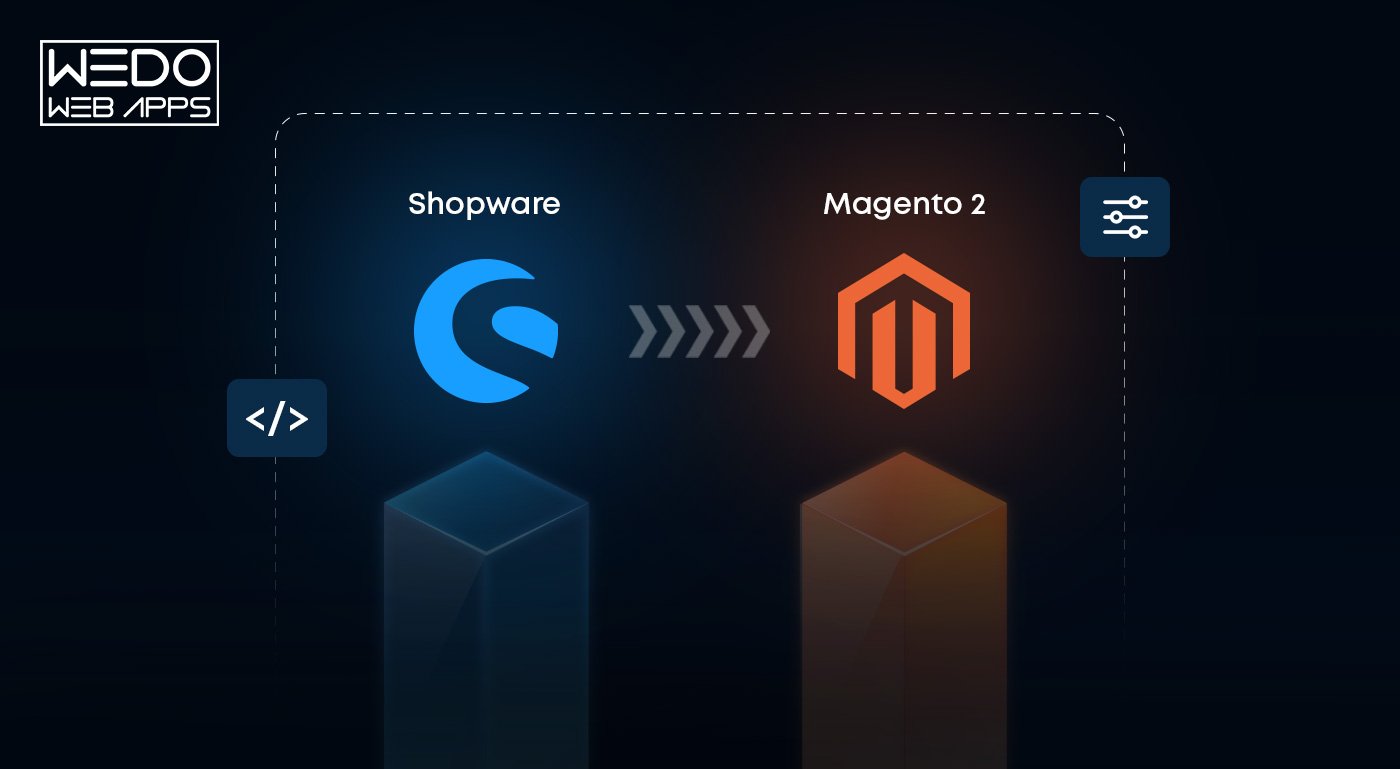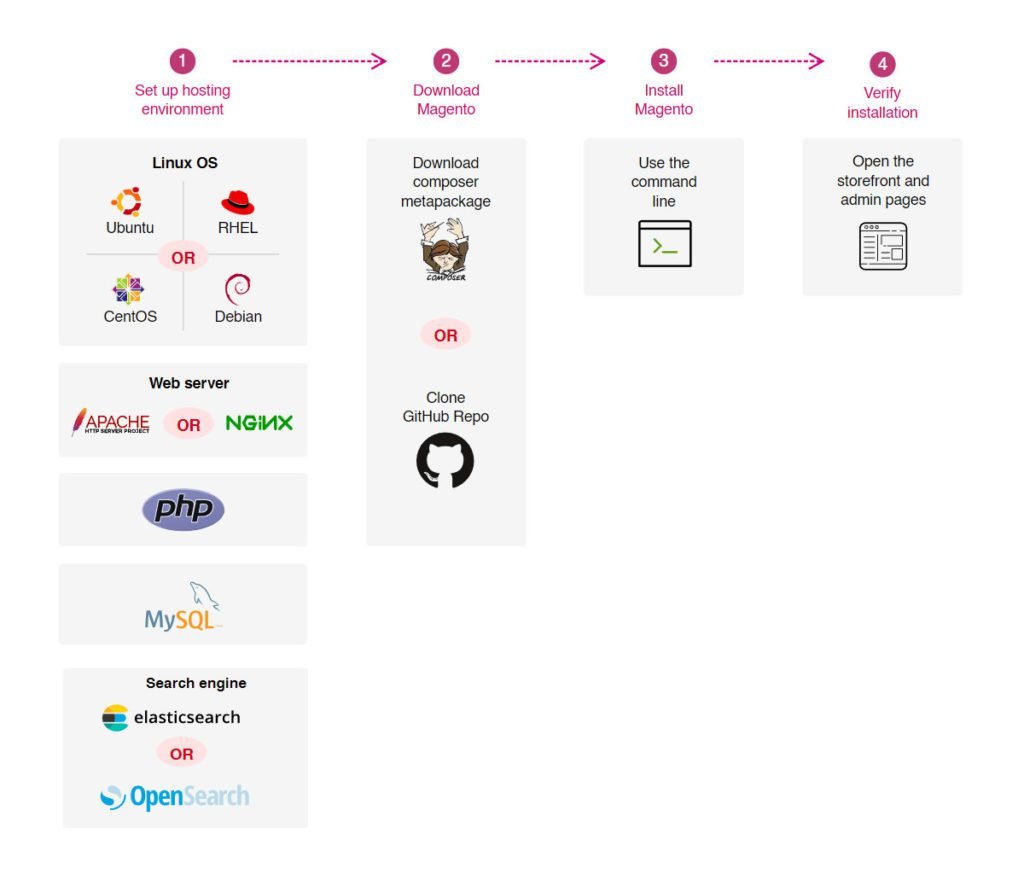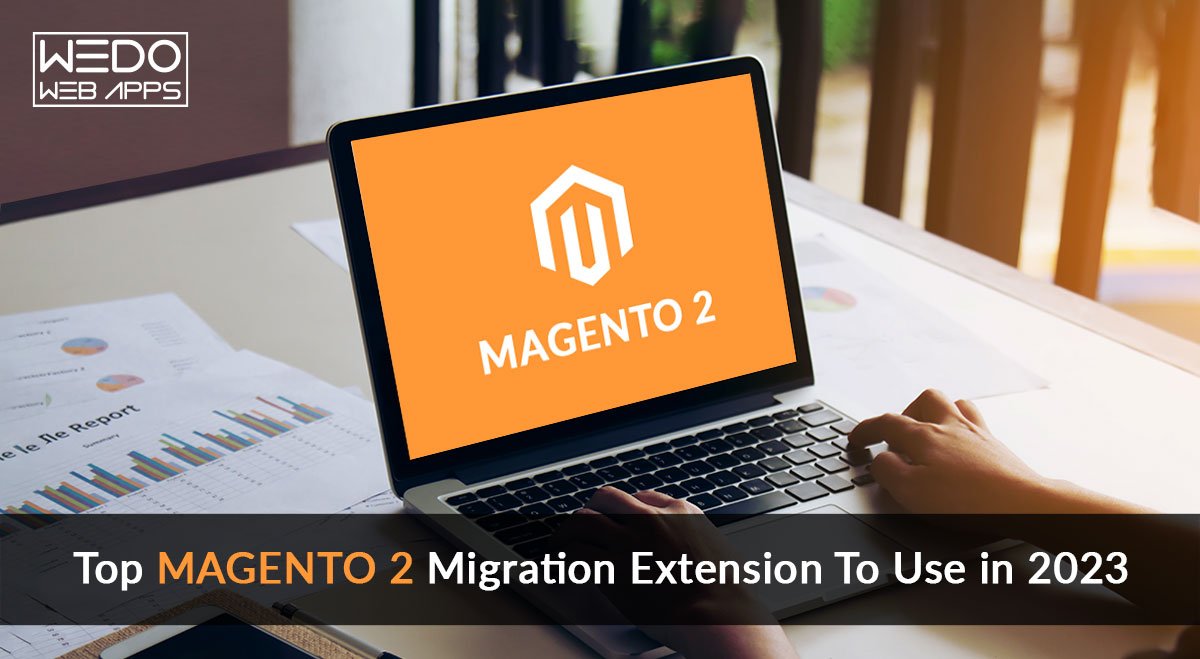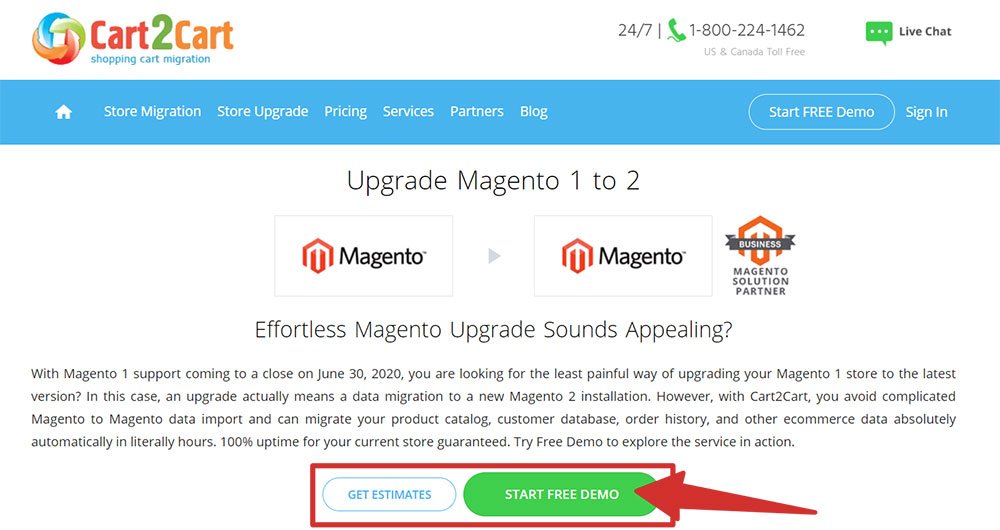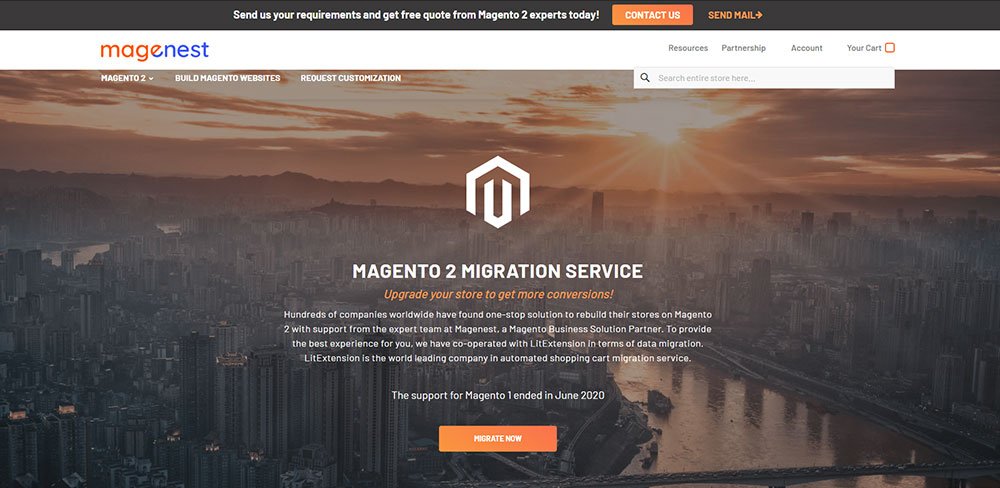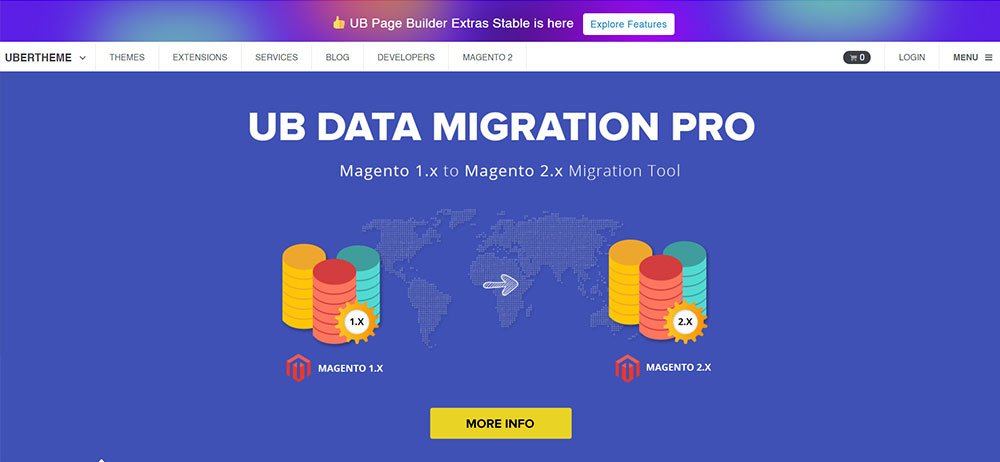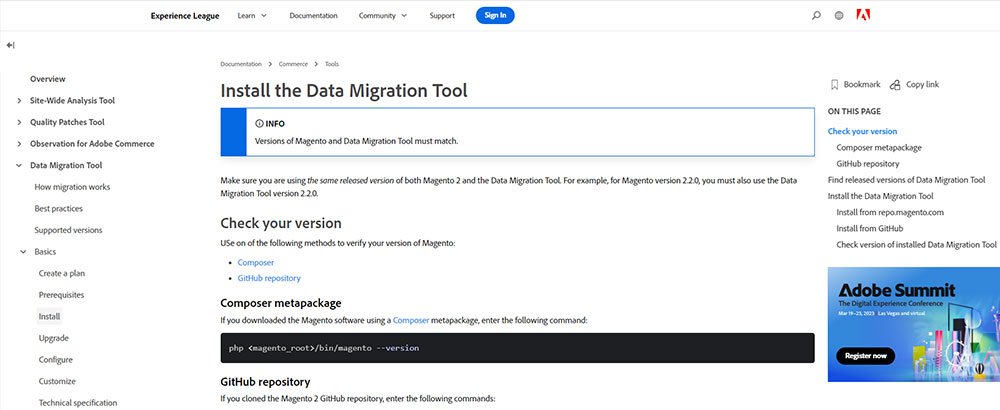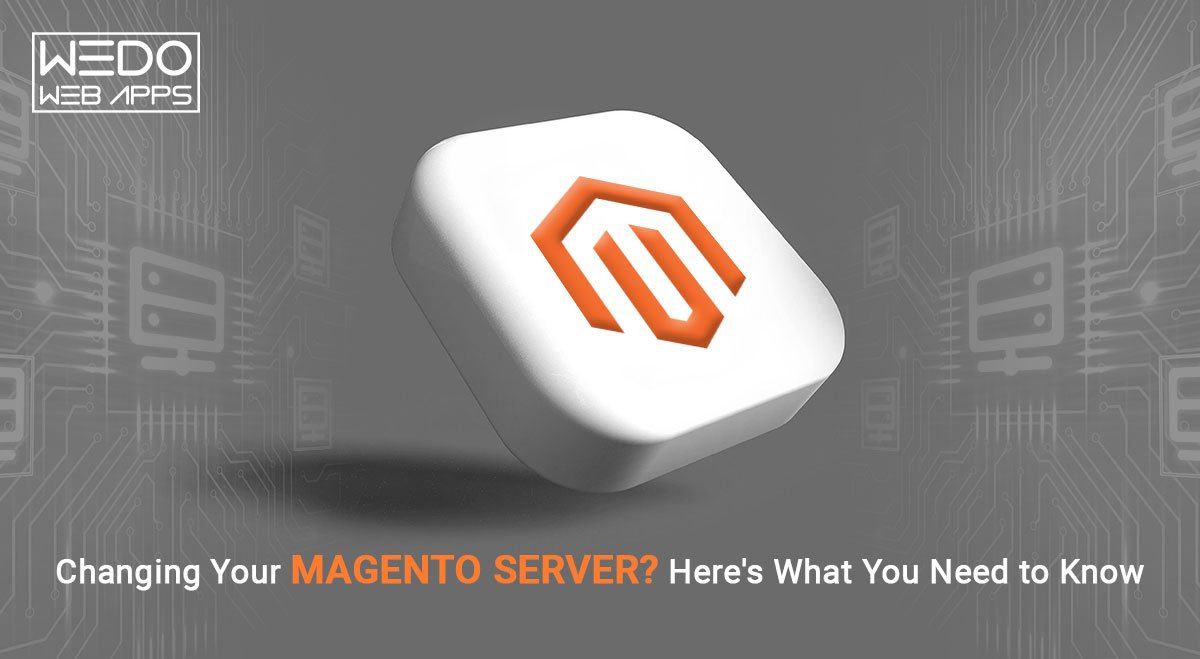Magento officially ended the Magento 1 support in 2020, which left many Magento store owners at crossroads.
Due to complications involved in the migration process, most vendors have not yet migrated to Magento 2. If you are one of them, you are in the right place.
Let us convince you that Magento 2 is worth giving a shot, all thanks to incredible features that are totally missing from version 1.
You won’t regret the migration, we promise.
So, we won’t take much of your time. Here we present a most comprehensive guide (literally) to help you understand Magento data Migration tool and enable migration to Magento 2 smoothly to build a successive E-commerce platform.
This Magento 2 migration guide will brief you on two things:
- Data Migration steps
- Magento database migration tool
And if you are too afraid, too busy to migrate it yourself, don’t worry. Hire a Magento migration company to do it for you.
So, let’s begin.
What Is Magento 2?
Magento, at the start of its journey, met with resistance from vendors. And why not? Migrating large stores to new platforms can bring unnecessary issues.
However, Magento 2’s extremely powerful features cannot be sidelined. It’s not just a march for something new, as Magento 2 definitely provides superior features.
The Rise of Magento 2 Can Be Due To Various Factors.
- Extraordinary Architecture
- Full Page Caching
- Enhanced SEO
- Multilingual Support
- Payment Gateways
- Exceptional Enterprise Features
Three Types of Magento Migration: Which One Is Better For You?
Method #1: Manual Migration
Manual Magento Migration is the process of manually transferring data, configuration, and customization from a Magento 1 installation to a Magento 2 installation. There are usually several steps involved in this process, such as:
- Data Backup
- Media file and Data Transfer
- Theme and Extension Migration
- Customization and Configuration Migration
- Testing, and Debugging
Manual Magento Migration can be a time-consuming and complex process, but it can be a cost-effective solution for businesses with limited budgets or custom requirements.
However, it is recommended to seek assistance from a professional Magento developer to ensure that the migration is done correctly and to minimize potential risks in building an E-commerce platform.
Method #2: Assisted Migration
Assisted Magento Migration is a process of migrating from Magento 1 to Magento 2 with the assistance of a professional migration service provider.
Assisted Magento Migration provides a more streamlined and efficient process than manual migration, as the migration service provider takes care of all the technical aspects of the migration, freeing up the business to focus on more pressing matters.
Additionally, assisted migration can reduce the risk of data loss or other migration-related issues. However, choosing a reputable and experienced migration service provider is important to ensure a successful migration.
Method #3: Automated Migration
Automated Magento Migration is a process of migrating from Magento 1 to Magento 2 using automated Magento migration tool and software. This type of migration typically involves the following steps:
Automated Magento Migration is the most efficient and quickest way to migrate from Magento 1 to Magento 2, as the automated Magento data migration tool handles most of the technical aspects of the migration, freeing up the business to focus on other important tasks.
However, choosing reliable and tested automated Magento migration tool is important to ensure a successful migration and minimize the risk of data loss or other migration-related issues.
Why Choose Magento 1 Over Magento 2?
Reason #1: Not Mobile Friendly
Migrating to Magento 2 can improve the mobile-friendliness of your website or E-commerce platform for several reasons:
- Responsive Design: Magento 2 has a responsive design framework, which automatically adjusts the layout and display of the website to fit different screen sizes and devices.
- Mobile-Optimized Checkout: Magento 2 has a mobile-optimized checkout process that is faster, simpler, and more convenient for customers to use on mobile devices.
- Enhanced User Experience: Magento 2 has improved navigation and mobile-friendly interface design to provide a better user experience on mobile devices.
- Advanced Mobile Features: Magento 2 includes features like touch-friendly product sliders, swipe-to-delete in shopping carts, and mobile-specific promotions and discounts, which enhance the mobile shopping experience for customers.
Overall, migrating to Magento 2 can help you deliver your customers a better and more mobile-friendly eCommerce experience.
Reason #2: More Opportunities For Growth
Migrating data to Magento 2 can provide growth opportunities for your business in several ways:
- Improved Scalability: Magento 2 is designed to support high-traffic websites, making it easier for businesses to handle increased customer traffic and growth.
- Advanced Marketing and Sales Tools: Magento 2 offers a range of tools to help businesses increase sales and customer engagement, such as customer segmentation, dynamic product bundles, and automated email marketing campaigns.
- Improved Search Engine Optimization (SEO): Magento 2 includes built-in SEO tools, such as rich snippets and improved URL structure, which can help improve search engine rankings and visibility, leading to more organic traffic and sales.
- Access to the Latest Technology: Magento 2 is designed to work with the latest technologies, including PHP 7 and HTML5, which can help improve website performance and provide new opportunities for innovation and growth.
Reason #3: Solid Support And Functionalities
Migrating to Magento 2 can address the issue of no support and missing functionality in Magento 1 in several ways:
- Technical Support: Magento 1 has reached end-of-life and is no longer receiving technical support from Magento. Magento 2, on the other hand, continues to receive regular security updates and technical support from Magento.
- New Features and Functionalities: Magento 2 includes exceptional enterprise features and functionalities that are not available in Magento 1, such as improved checkout process, enhanced reporting and analytics, and better customer engagement tools.
By migrating to Magento 2, you can take advantage of these benefits and ensure that your E-commerce store and website con tinues to be supported and functional, providing a better experience for your customers and helping your business grow.
Reason #4: Security Patches And Updates Are No Longer Available In Magento 1
Migrating to Magento 2 is a good solution for security patches and updates no longer being available in Magento 1.
- Ongoing Support: Magento 1 has reached end-of-life and is no longer receiving technical support or security updates from Magento. Magento 2, on the other hand, continues to receive regular security updates and technical Multilingual Support.
- Improved Security Features: Magento 2 includes enhanced security features, such as protection against cross-site scripting (XSS) and cross-site request forgery (CSRF) attacks, making it a more secure platform for your eCommerce website.
- Compliance with Security Standards: Magento 2 is built to comply with current security standards and best practices, helping to protect your website from potential security threats.
By migrating to Magento 2, you can ensure that your website continues to be secure and protected from potential security threats, providing a better experience for your customers and helping your business grow.
Magento 2 has additional website categories with improved usage coverage. It consists of 13 other categories aside from lifestyle, home & garden, e-commerce & shopping and computers, electronics & technology.
| Category |
Magento 1 Market Share |
Magento 2 Market Share |
| Lifestyle |
3.166 websites |
5.232 websites |
| Home& Garden |
2,024 websites |
3,926 websites |
| E-commerce and shopping |
2,444 websites |
3,220 websites |
| Sports |
1250 websites |
1,911 websites |
| Gambling |
78 websites |
62 websites |
The process of Magento 1 to Magento 2 Migration
Magento 2 migration is considered to be one of the most complicated processes when it comes to web development. This is because several people are involved: a project manager, a designer, a developer, and a quality assurance engineer.
In the process, a few patterns are explained in this detailed checklist.
It explains what stages it includes and how to handle every milestone in migration from Magento 1 to Magento 2.
The question is, how long does it take to migrate from Magento 1 to Magento 2? Several factors will influence the duration:
- Number of third-party extensions;
- Specifications for the design and theme;
- A new additional feature;
- Amount of views on a store.
Duration Estimates For Magento Migration
- The Planning Stage: 40–60 hours
- Putting together a CJM: 30–40 hours
- UX and UI (mobile/tablet/desktop design): 120–250 hours
- Post-release work, data migration, and frontend and backend work :640–800 hours (which is 4–5 months)
- Grand Total: Approximately 830–1150 hours (which is 4–7 months)
Migration components
Migrating Magento 2 involves the following components: data, extensions, and custom code, as well as themes and customizations.
For migrating products, customers, orders, store configurations, promotions, and more to Magento 2, there are several Magento migration tools are available to perform Data Migration. You will also receive a guide on how-to use the tool and best practices for migrating data.
-
Extensions And Custom Code
Major companies have worked hard with the development community to make Magento 2 extensions compatible with Magento.
Now, there are several Commerce Marketplaces ready to offer the latest versions of your favourite extensions for download or purchase.
-
Themes And Customizations
As a result of Magento 2, merchants can create innovative shopping experiences and scale to new levels using new approaches and technologies.
It will be necessary for developers to make adjustments to their themes and customizations to take advantage of these advancements.
Documentation is also available online for designing Magento 2 themes, layouts, and customizations.

Tips For A Successful Magento 2 Migration
You need to keep a few things in mind as you plan your Magento 2 migration.
-
Audit The Site For Errors
The first step is to review your data and look for any errors or discrepancies. You should especially take this step when migrating from an older version of Magento, as data can sometimes become corrupted over time. Ensure you know the data you need to migrate and how Magento 2 will handle it.
The next step is to decide what tool you will use to migrate your data. Different options exist with various advantages and disadvantages. Consider your needs before choosing one.
-
Proper Software Configuration
A successful migration also depends on hardware and software configuration. Ensure your server meets Magento 2’s minimum requirements and has a backup plan if something goes wrong.
-
Work with an experienced partner
Migrating your store yourself can be disastrous. Instead, consider working with a Magento development partner who has experience migrating to Magento 2. In addition to helping you plan and execute your migration, they will ensure everything goes smoothly.
Ensure you thoroughly test your new Magento 2 store before it goes live to ensure everything is working properly. Ensure all products, orders, customer accounts, etc., are correctly migrated over.
Follow these tips to ensure a successful migration from Magento to Magento. With the right tools and careful planning, you can make the migration process as seamless as possible.
Process Of Migrating From Magento 1 To Magento 2 (From The Developer’s Perspective)
Migrating from Magento 1 to Magento 2 involves upgrading a merchant’s existing e-commerce platform.
A seamless transition requires careful planning, testing, and execution from a development perspective to ensure minimal disruption to online store operations. Here is a step-by-step process for Magento 1 to Magento 2 Migration.
Step 1. Preparation Works
To begin the Magento 1.9 to 2.0 migration, the development team must ensure that all the necessary software and setups are in place. The software requirements will vary depending on the version of Magento used.
Requirements For Magento 2.3.x:
- The minimum PHP version is 7.3.x.
- MySQL 5.7 or MariaDB 10.2.
- Other PHP extensions are bc-math, ctype, curl, dom, gd, hash, iconv, intl, json, libxml, mbstring, OpenSSL, PDO/MySQL, SimpleXML, soap, spl, xsl, zip.
Requirements For Magento 2.4.x:
- The minimum PHP version is 7.4.x.
- 5.7.9 or 8.0 for MySQL, or 10.2 or 10.4 for MariaDB.
- PHP extensions are also supported: bc-math, ctype, curl, dom, gd, hash, iconv, intl, json, libxml, mbstring, OpenSSL, PDO/MySQL, SimpleXML, soap, spl, xsl, zip.
- The Elasticsearch 7.9.x advanced search solution.
In terms of hardware, it is recommended that you have at least 2 GB of RAM. Otherwise, the code will not be able to be compiled. A combination of SSD technology with 24 GB+ will further enhance the store’s performance.
You must install the latest version of Magento, which is currently 2.4.2, to migrate to Magento 2. You can download the Open Source edition from the official website or Github.
Step 2. Configuring the Magento Data Migration Tool
The standard Magento 1 to Magento 2 data migration tool is recommended for moving your store.
To move and merge data correctly from the source platform, you will need to write custom logic. You will also need to change the code to transfer any custom data. Magento 2 doesn’t include these tables or columns.
You can follow this short Magento 2 data migration tool tutorial to get started with Magento composer https library.
Here is the code for installing the Magento database migration tool:
root# composer require magento/data-migration-tool:2.4.2
./composer.json has been updated
Loading composer repositories with package information
Updating dependencies (including require-dev)
Package operations: 1 install, 0 updates, 0 removals
– Installing magento/data-migration-tool (2.4.2): Downloading (100%)
Writing lock file
Generating autoload files |
Change the >data migration tool for Magento 2 in the corresponding directory in the Magento 2 root folder. Then, copy the configuration file for your Magento 1 version.”
| vendor/magento/data-migration-tool/etc/opensource-to-opensource/1.9.x |
In XML file follow this — “In the config.xml file, specify where to store and retrieve migrated data from as shown in the following example:”
<source>
<database host=”localhost” name=”m1″ user=”m1″ password=”m1″/>
</source>
<destination>
<database host=”localhost” name=”m2″ user=”m2″ password=”m2″/>
</destination> |
Step 3. Settings Migration Configuration
After migrating the data, the next step is to migrate the settings. Do the following in the Magento 2 root folder:
| php bin/magento migrate:settings vendor/magento/data-migration-tool/etc/opensource-to-opensource/1.9.x/config.xml |
As a result, we got:
| [2021-02-17 18:22:22][INFO][mode: settings][stage: integrity check][step: Settings Step]: started
100% [============================] Remaining Time: < 1 sec
[2021-02-17 18:22:22][INFO][mode: settings][stage: integrity check][step: Stores Step]: started
100% [============================] Remaining Time: < 1 sec
[2021-02-17 18:22:22][INFO][mode: settings][stage: data migration][step: Settings Step]: started
100% [============================] Remaining Time: < 1 sec
[2021-02-17 18:22:24][INFO][mode: settings][stage: data migration][step: Stores Step]: started
100% [============================] Remaining Time: < 1 sec
[2021-02-17 18:22:24][INFO][mode: settings][stage: volume check][step: Stores Step]: started
100% [============================] Remaining Time: < 1 sec
[2021-02-17 18:22:24][INFO][mode: settings][stage: volume check][step: Stores Step]: Migration completed |
The example above was relatively simple.
If your case requires more in-depth configuration than just installing the stock, please change the configuration file.
(vendor/magento/data-migration-tool/etc/opensource-to-opensource/1.9.x/config.xml) as shown below.
Make sure that settings.xml code is copied from XML file before you make edits.
| <settings_map_file>etc/opensource-to-opensource/settings.xml.dist></settings_map_file> |
Step 4. Customize Magento 2 functionality.
Custom functionality for a new Magento 2 store takes a good part of the time. Hiring experienced Magento developers at this stage is essential. You can minimize the risk of running into bugs caused by ham-handed “specialists” work.
There is a lot of manual work involved with Magento 2.x, but you can migrate some custom code from Magento 1.x to Magento 2.x.
The Magento Code Migration Toolkit provides scripts to convert custom M1 code into M2 by moving the following aspects of code to Magento 2’s structure and format:.
- Layout XML files;
- Config XML files;
- PHP files;
- Module directory structure.
It is important to note that some generated files still need to be manually edited.
Step 5. Identify and create replacement modules for the existing modules
If you migrate from a completely different platform, you may have to make a few compromises to find the same functionality.
Your existing custom functionality has three main alternatives you can choose from.
- The Magento Marketplace contains both versions of Magento 1 extensions and Magento 2 extensions. However, the functionality may differ.
- Previously exclusive extensions that are now available through third parties.
- Customizations that require a complete rebuild for Magento 2.
Rank all the customizations in order of priority before you migrate from Magento 1 to Magento 2. Make a list of all the extensions you have before you upgrade.
When migrating from one platform to another, try dropping as many unnecessary extensions as possible. This can reduce migration costs and improve performance in the future.
Step 6. Configure the Servers
When migrating from Magento 1.x to Magento 2, the server configuration is essential to the development phase.
In addition, Magento’s second version is considered slower than its predecessor, so full page caching tools play a vital role in keeping the website running smoothly.
Therefore, Varnish, an HTTP accelerator, helps the user to see the page almost instantly, optimizing Magento performance and enhancing your store’s speed. Additionally, it creates an extra layer between the web server and the user.
As a result of caching images, Varnish can help improve Magento 2 performance even further when combined with a CDN. In addition, Redis can cache database objects for dynamic database-driven websites.
Step 7. Magento 1 to Magento 2 Data Migration Steps
You will have to move five different data categories during the Magento database migration milestone. These are
- Customer data (migration time from Magento 1 to Magento 2);
- product data;
- orders data;
- store settings;
- third-party extensions data.
But before you do this, it will ask you for access keys. If you haven’t created access keys, create them before you start this process.
Depending on how many custom fields you have in these five entities, migration takes about 8 hours for each of them. The fewer the custom fields, the faster the migration.
Custom attributes add complexity to the migration process, requiring manual migration to move them from one store to another.
Custom data is the biggest challenge. Migrating a standard account information table will take an hour at most.
With the ability to use heavily customized data in the future, moving the same amount of heavily customized data will take up to eight hours, so that Magento data migration will take 20–40 hours.
Step 8. Make Tweaks
It is important to remember that the store launch is not the end of development. You’ll often have to log time to make tweaks, fix bugs, and develop new features as requested by stakeholders. You should also plan for feedback and technical emergencies.
The Risks of Ignoring Magento 2 Migration
Let’s take a closer look at what Magento 1 stores can expect if they don’t migrate to Magento 2. When you don’t migrate to Magento 2, your online store becomes vulnerable to security threats and is at a disadvantage in terms of functionality and innovation.
Risk 1: PCI Compliance
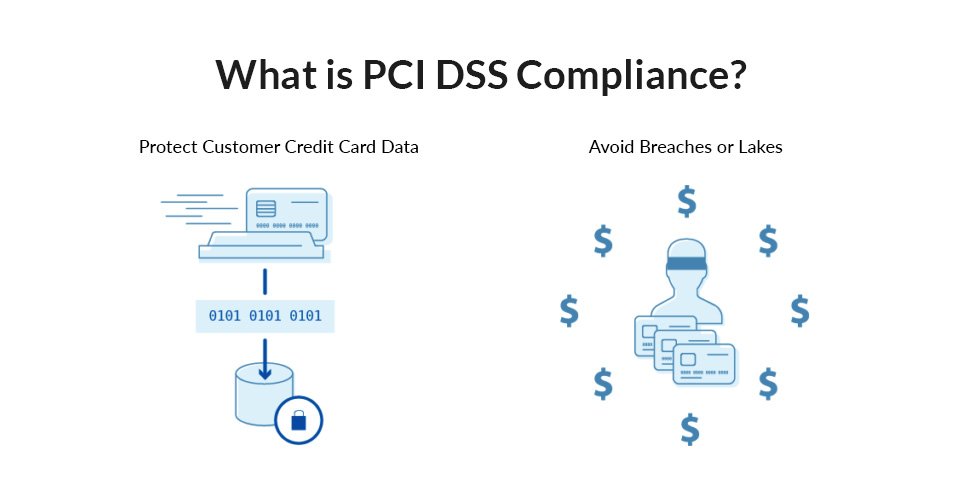
Businesses must comply with Payment Card Industry Data Security Standard (PCI) to protect their online stores’ security.
Each merchant should review its PCI compliance at least once a year. On average, these tests get conducted every three months.
By not following the rules, you will be subject to severe penalties and unable to use the most popular payment gateways.
Typically, small businesses face a $5,000 monthly penalty, and large corporations face a $10,000 monthly penalty if they fail to address security issues within 1–3 months.
A fine of $25,000 per month will be imposed on small businesses for violating the legislation for 4–6 months, while a penalty of $50,000 per month will be charged to large eCommerce businesses.
Companies that ignore the regulations for more than seven months will be charged $50,000 for small businesses and $100,000 for big companies.
Risk #2 : Scalability Issues
Scalability is an essential factor to consider when choosing an eCommerce business. As the number of customers, orders, and products on your website grows, you may need to scale it.
Unfortunately, Magento 1 cannot do this because it is already outdated and lacks specific capabilities.
While Magento 2 was developed specifically to meet the needs of dynamic businesses, Magento 1 was designed to meet the needs of static companies.
In a short period, you can scale from hundreds to thousands of products using layered architecture, multiple database masters, and MySQL cluster support.
The scalability of Magento 2 is 50% better than Magento 1. Several master databases can get added, and slave databases can be assigned to them. It can process over 10 million views per hour.
As a result of the extraordinary architecture, different components can be scaled independently, including clients, products, databases, etc.
Risk #3: Performance and Speed
Slow loading speed and long page load times are among the significant drawbacks of Magento 1. This was Magento’s primary motivation for building an entirely new platform that comes ready to use.
Magento 2 provides unmatched performance and pace, which is impossible with Magento 1.
With the most recent version of the platform, response times have been improved, loading times have been shortened, and backend operations have been simplified.
As Magento 2 can handle 135,000 more orders per hour than Magento 1, it is an excellent choice for even the most prominent businesses.
Risk #4: Incompatible Integrations
This platform is highly adaptable and heavily relies on third-party integrations.
For example, a simple store usually has at least ten integrations. This includes:
- Payment Gateways
- Delivery Options
- A Content Management System
- A Search Tool, etc.
These integrations would likely disappear if Magento 1 stopped working altogether.
As time goes on, more and more businesses will cease to offer Magento 1-based solutions. It’s the same with add-ons and extensions.
Your Magento 1 store will be outdated in no time. You must provide your users with an excellent data migration service experience as your competitors do on M2 to keep your company afloat.
Therefore, Magento 2 migration is one of the most suitable options for your business, and you should consider doing it.
Risk #5: Lost Conversions
Consider upgrading your company’s conversion platform if you feel your company is not converting customers enough. That’s what Magento 2 can help you do.
Studies have shown that Magento 1 conversion rates average 1.1%, while eCommerce conversion rates averaged 3.65% in 2022. Additionally, Magento 2 has more benefits than Magento 1. Magento 2 has a conversion rate of about 2%.
According to Magento 2, users’ online revenue increases by x2 after migrating to Magento 2. Migration can boost many metrics, such as website speed, business performance, conversions, and competitiveness.
Congrats on a successful Magento migration!
But…
The journey doesn’t end here.
Start it off right with this comprehensive post Magento migration checklist, which covers all the critical aspects of a successful launch.
1. Current State Of Your Website
Of course, it is necessary to use enhanced SEO tools to assess the web page’s performance. Tools such as Google Analytics and Google Search Console, as well as a Crawling tool, will allow you to measure your business’s success regarding Google searches.
These tools show the website’s tags, revenue, conversion rate, and other information about its search engine optimization (SEO).
To ensure that your website performs better after migration, you should carefully and objectively estimate its current state.
2. Data Catalog
The first thing you should do before migrating your data is to review your data catalog so that the meta descriptions, meta titles, and page descriptions you will migrate are well-prepared and well fitting.
Next, ensure images are properly migrated with products, and check the process of image migrations. Often, pictures disappear during migrations.
You should also double-check the product data in the system, as it might be broken or incomplete.
3. Indexing Structure
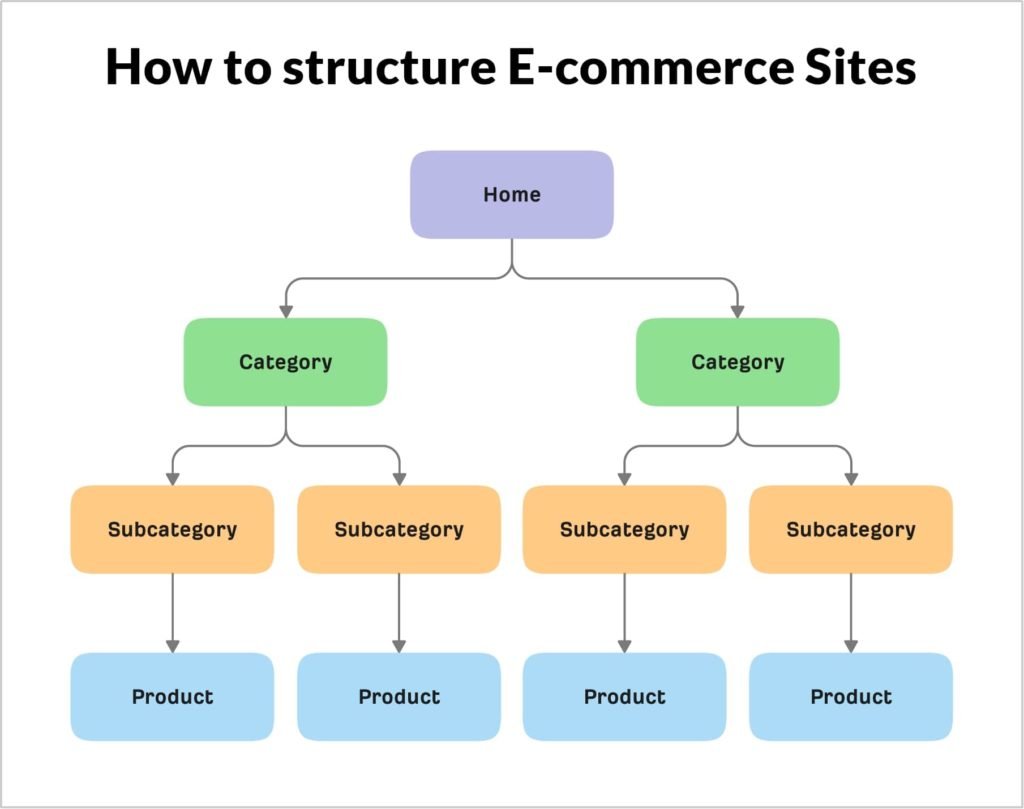
A database with many filters requires a careful review of the indexing structure. In most cases, you’ll want to avoid indexing many pages.
When you wish to block crawlers and not let them onto the page, you need to use the “no index, no follow” directive.
As a result, when you have too many pages, you must choose which ones are worth spending crawling budgets on them and which ones are not worth spending crawling budgets on.
4. Check Tags
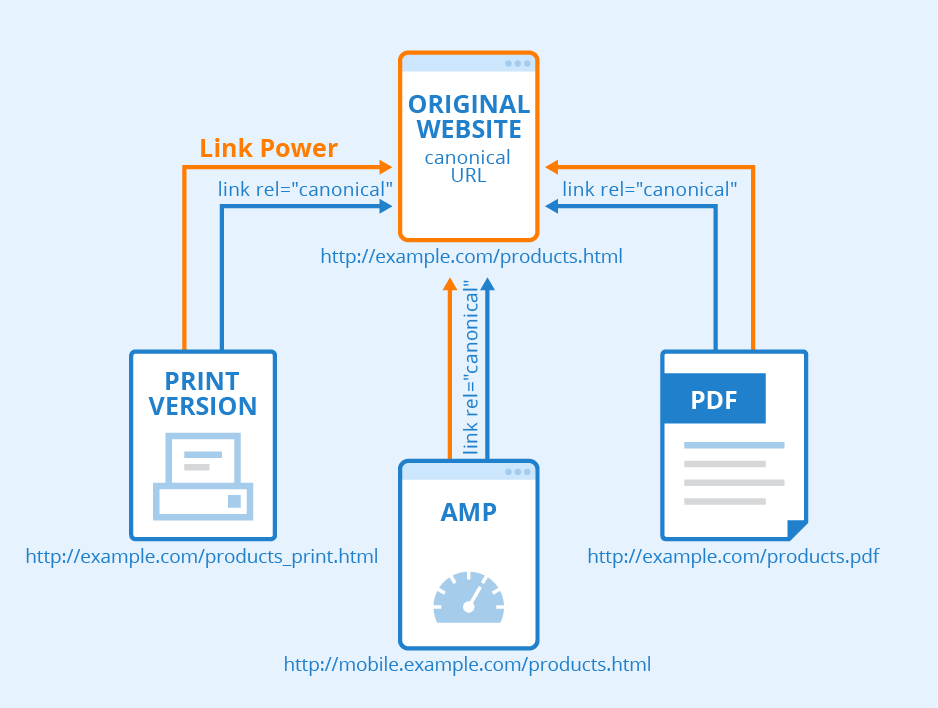
If you don’t use canonical tags on your website, Google might not recognize your pages correctly.
Thus, the tags for the website need to have real canonical, and the images need to have ALT tags.
Also, make sure you implement hreflang tags if you have a multistore to ensure that the correct version of your store is displayed to the right customers.
All these measures will help your store achieve good search engine rankings. Just remember that they should all be in line with your SEM strategy.
5. XML Sitemap
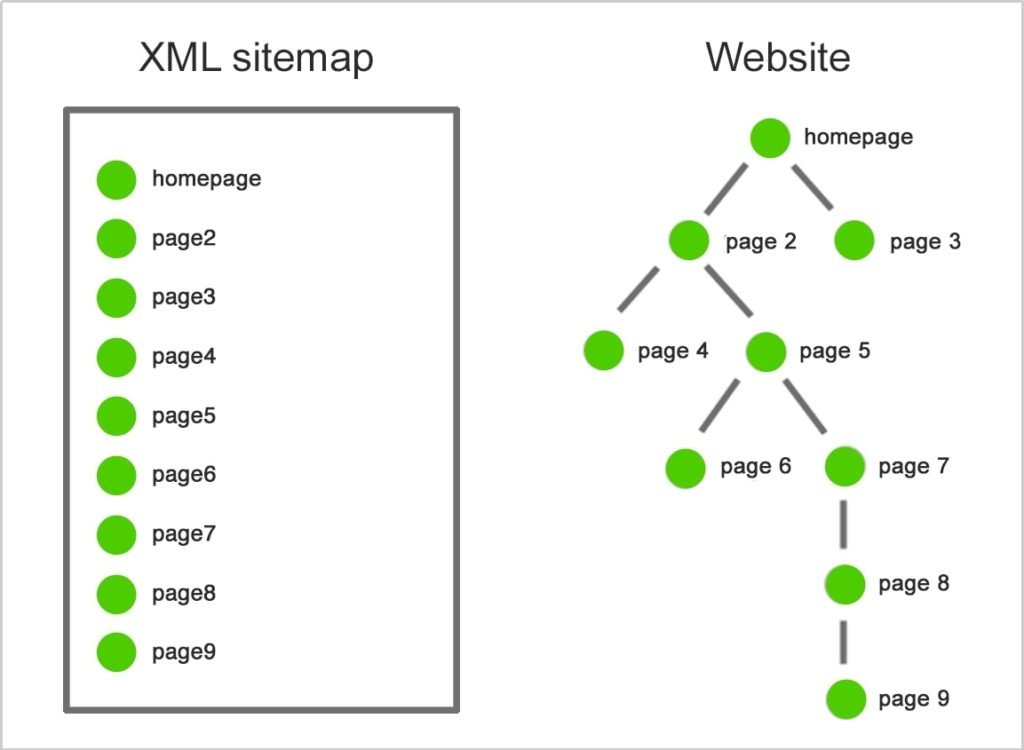
As part of the process, reviewing your XML sitemap is also very advantageous to ensure that all pages have been adequately prepared and customized. This customization can often require some attention from the developers, but it is well worth it when done correctly, as it simplifies access to your store.
6. Structured Data Markup Implementation
Magento 2 has both good news and bad news. First, Magento 2 comes with a product structure out of the box.
Second, you need to prepare microdata and be prepared for additional customizations.
Finally, by putting in the proper metadata and rich snippets, you will be able to increase your chances of Google ranking your pages higher.
7. 301 Redirects

The 301 redirect process is crucial to avoid losing non-working links and ensure customers are redirected to a better website.
It is possible to migrate 301 redirects through Magento admin or .htaccess file, but the number of redirects should not exceed a certain threshold.
In addition, many redirects will likely need to get rewritten during the migration process, so be careful when migrating your site and checking your redirects.
8. Test
You should pay attention to intensive testing! Remember that when you don’t do intense testing, it is easy to miss the issues that might drive away your customers.
Further, you should perform a quality analysis of the store’s website so that you can evaluate and improve the speed and performance of the website.

9. After-Launch
After launching a migrated Magento store, the robots.txt file and the new website console must be uploaded to Google Search Console. Once you have done these, you need to check your tracking.
If it doesn’t work, you won’t receive data about your performance. As a final step, check all the indexed pages, keywords, traffic, and reports. If you follow all the steps, you’re much more likely to succeed in your migration.
Conclusion
We hope this guide helps you with your Magento migration. If you are looking for Magento migration services, drop us a message. At WeDoWebApps, our Magento team is here to help you migrate your store seamlessly without a hitch.

